|
 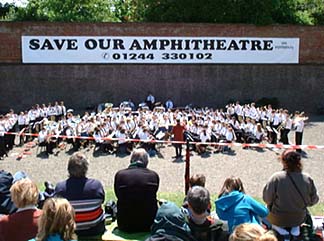 ere
we
see
the
impressive
20
metre-long
banner commissioned
by
the
Chester
Amphitheatre
Trust
on
display
at
a
BBC Music
Live event
at
the
amphitheatre
in
late
May
2000. ere
we
see
the
impressive
20
metre-long
banner commissioned
by
the
Chester
Amphitheatre
Trust
on
display
at
a
BBC Music
Live event
at
the
amphitheatre
in
late
May
2000.
The
Trust
would
have
liked
it
to
remain in
situ for
the
entire
'period
of
consultation'
which,
so
we
had
been
led
to
believe,
Chester
City
Council
was
now
actively
pursuing
with all the
public. However,
very
soon
afterwards,
the
banner
was
taken
down
on
the
orders
of
that
very
same
council.
In
his letter to
the local
press
a
couple
of
weeks
earlier, Councillor
Neil
Richie had
assured
us
that
"all
councillors
were
in
support
of
the
aims
of
the
Chester
Amphitheatre
Trust".
Certain
council
officers,
however, would
seem
to
have
been
of
a
rather
diffent
persuasion.
The
following
communication
about
the
banner,
headed
"without
prejudice",
to
the
Trust
from
Head
of
Planning Andy
Farrall illustrated
precisely
how
supportive
the
city
council actually was:
"This
is
an
advert-
it
is
intended
to
draw
the
attention
of
the
public
to
the
campaign.
Under
the
above
regulations
the
banner
requires
'express
consent'
from
the
local
planning
authority
(the
City
Council
in
this
case).
The
fact
that
it
is
temporary
is
not
relevant
in
this
case
as
it
does
not
fall
within
any
of
the
categories
of
temporary
adverts
as
set
out
in
the
regulations.
Therefore,
to
display
the
banner
you
need
make
a
formal
application
to
the
City
Council
by
filling
in
the
relevant
forms,
which
are
available
from
this
office, and
a
fee
of
£190
is
required (our
italics).
The
application
is
then
processed
and
the
decision
should
then
be
put
to
the
Council's
Planning
Board
for
determination".
We
felt
sure
that
the
banners publicising council-approved events
that
flapped
from
the
hugely-unpopular flagpoles in
Town
Hall
Square had been
granted
the
appropriate
permission-
hadn't
they?
City
council
spin-doctor Michael
McGivern proved
equally
supportive
to
the
aims
of
the
Trust:
"We
do
not
allow
any
organisation
to
display
banners
on
council-owned
land-
and
certainly
not
on
ancient
monuments".
Our
photograph
would
seem
to
indicate
that
the
banner
was
actually
displayed
upon
a
1960s
brick
wall,
but
whatever...
Here's
some reader's
comments about
the
situation.
The
banner
itself
was
later
displayed
for
a
while
high
up
on
the
steelwork
of
the
new
extension
to
the Mill
Hotel next
to
the
Shropshire
Union
Canal
and
the
city's
Inner
Ring
Road,
proprietors Gordon and Gary
Vickers being
supporters
of
the
aims
of
the
Chester
Amphitheatre
Trust.
Speaking
before
a
council
meeting
in
July
2000,
Gordon
Vickers
had
said,
"In
a
democratic
country
everyone
has
a
right
to
voice
their
opinion
otherwise
it
becomes
a
dictatorship.
If
councillors
ignore
the
views
of
their
constituents, they become
dictators".
However,
the
head
office
of
the
contractors
carrying
out
the
work
on
the
extension, Joseph
Finney
PLC of
Winsford,
seemed
not
qute
so
keen
on
free
speech-
at
least
not
on
their
patch-
for
they
ordered
the
removal
of
the
banner,
saying
it
was
not
"appropriate"
to
advertise
anything
on
the
site
except
the
project
itself.
Some
time
earlier,
on 10th
May
2000,
a
second
packed
public
meeting
called
by
the
Chester
Amphitheatre
Trust
took
place
at
the
Town
Hall,
where
was
presented
a
fascinating
series
of
proposals
for
alternative
uses
for
Dee
House.
Should
it
be
totally
demolished
and
the
site
cleared
ready
for
excavation?
Should
its
facade
be
retained
but
moved
back
50
yards
or
so
away
from
the
amphitheatre
to
form
the
frontage
of
an
entirely
new
building?
Or
should
it
be
completely
restored
and
utilised
as
a
museum
/
visitor
/
interpretive
centre
at
the
heart
of
an
ongoing
archaeological
excavation?
Archaeologist and author Dr
David
Mason spoke movingly
of
the deliberate trashing
of the
great
Roman
bath
houses
and
the
mysterious Elliptical
Building-
unique
in
the
Roman
World-
in
the
1960s
and
70s
during
the
construction
of
the
Grosvenor
Precinct
and
Forum,
illustrated
with
some
heart-rending
slides
of
the
bulldozers
at
their
destructive
work.
He
pointed
out
that
a
high
proportion
of
Chester's
Roman
and
later
finds-
including
hundreds
of
items
found
during
the
1960s
amphitheatre
excavation
and
many
of
the
unique
collection
of
Roman
gravestones
found
in
the North
Wall-
are
currently
in
storage
due
to
lack
of
display
space
at
the
Grosvenor
Museum.
A
new
museum
in
Dee
House
may
be
the
ideal
home
for
this
important
material,
together
with
whatever
new
finds
come
to
light
during
the
course
of
the
excavation
of
the
southern
half.
This
latter
idea
was
greeted
with
a
deal
of
enthusiasm
by
many
attendees,
but
they
were
reminded
that,
in
stark
contrast
to
this,
our
City
Council's
idea
of
restoration
involved
the
building
being
utilised
as yet
more commercial
offices
with
restaurants
and
bars
on
the
ground
floor-
doubtless
with
a
generous
allocation
of
car
parking
space.
The
courthouse
developer,
David
McLean,
had
offered
to
underwrite
the
cost
of
this
refurbishment-
around £1.5
million-
but
was
understood
to
be
looking
for
a
'realistic'
financial
return
on
his
investment.
Sadly,
in
a
city
where
even
such
ancient monuments
as
the Watertower and
the Phoenix
Tower have
been
long
closed
due
to
'lack
of
funds'
(a disgraceful situation that continues years later, in Summer 2013) there
seemed
little
likelihood
of
either
local
authority
or
philanthropic
private
funding-
from
building
developers
or
elsewhere-
being
available
for
such
'unprofitable'
enterprises
as
a
mere
museum.
The
cultural
and
educational
benefits
that
such
a
facility
would
bring
to
Chester's
citizens
and
visitors
evidently
counted
for
little
in
an
environment
where
a
fast
profit
was
all
that
mattered.
Whatever
the
case
for
Dee
House,
a
clear
majority
of
those
attending
the
meeting
nevertheless
made
it
clear
that
they
wished
to
see
the
building
demolished
and
a
full
excavation
of
the
amphitheatre
take
place
and everyone present
expressed
their
strong
desire
to
see
a
rapid
halt
to
the
work
on
the
courthouse.
The
evening's
findings
were
duly
forwarded
to
the
City
Council
and
Lord
Chancellor's
Department
for
their
consideration.
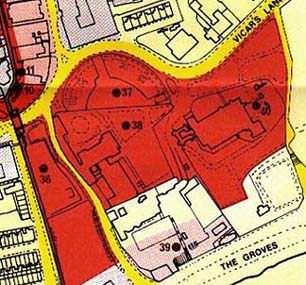 "The
Court
service
signed
a
legally
binding
contract
with
the
Developer,
David
McLean
Developments
Ltd,
on
20
December
1999
whereby
the
Court
service
is
legally
bound
to
occupy
the
building
within
twenty-one
days
of
the
completion
of
its
construction. The
Court
Service
were
aware
of
the
location
of
the
site
and
of
its
archaeological
significance,
but
all
appropriate
approvals
in
relation
to
both
planning
and
preservation
had
been
obtained
by
the
developers". "The
Court
service
signed
a
legally
binding
contract
with
the
Developer,
David
McLean
Developments
Ltd,
on
20
December
1999
whereby
the
Court
service
is
legally
bound
to
occupy
the
building
within
twenty-one
days
of
the
completion
of
its
construction. The
Court
Service
were
aware
of
the
location
of
the
site
and
of
its
archaeological
significance,
but
all
appropriate
approvals
in
relation
to
both
planning
and
preservation
had
been
obtained
by
the
developers".
Government
spokesperson Jane
Kennedy
MP answering
a
Parliamentary
question
by
Conservative
MP
Nick
Hawkins:
April
2000
We
thought
you'd
be
interested
in
seeing
the
map
on
the
right-
a
small
section
from
the Areas
of
Archaeological
Importance
(AAI) plan,
which
was
drawn
up
by
Chester
City
Council
in
1989
to
meet
the
requirements
of
Section
2
of
the
1979
Ancient
Monuments
and
Archaeological
Areas
Act,
and
described
as
"for
internal
use
only".
(In
1984,
Chester
had
been
designated
as
one
of
only
five Areas
of
Archaeological
Importance in
the
UK.
The
formal
incorporation
of
archaeology
into
the
planning
system
this
brought
about
was
expanded
into
a
national
policy
with
the
advent
of
the
Planning
Policy
Guidance
Note
16-
'PPG16'-
in
1990).
The
areas
coloured
red,
which
include
the
entire
area
of
the
amphitheatre,
Dee
House,
St. John's
Church
and
the
recently-refurbished
Roman
Garden
are
described
in
the
accompanying
key
thus:
"Scheduled
sites
and
/
or
other
areas
of
archaelogical
importance where
no
development
is
permissible except
for
the
purpose
of
public
display
of
ancient
remains".
The
red
dots
37
and
38
on
the
amphitheatre
site
are
described
as:
"Currently
displayed
and
/
or
display-worthy
sites
and
features.
Existing
displays
are
to
be
retained,
others
to
be
added
wherever
possible. No
damaging
or
limiting
development
permissible" (our italics).
More
recently,
the Greater
Chester
Local
Plan dating
from
1988,
which
gave
guidance
on
overall
planning
policy,
marked
the
site
as
a 'Conservation
Area,
section
CA3',
with
a
stated
policy
to "increase
public
knowledge
and
access
to
the
historical
monument" and
the current Local
Plan
for
Chester (since
1997)
designates
the
amphitheatre
site
as
a
strategic
open
space
and
part
of
the
'green
So
much
for
all that,
then.
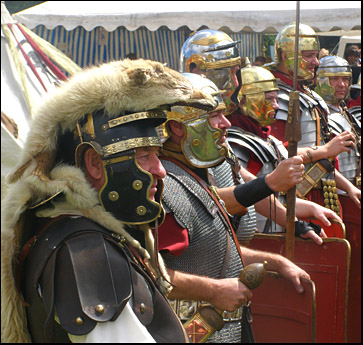 You
may
also
be
interested
to
know
that
the
archaeologically-important
area
known
as
Fletcher's
Lane / Buildings,
between
Eastgate
Street
and
St. Michael's
Row,
which
our
councillors
have
recently
allowed
to
be
needlessly
destroyed
so
that Brown's /Debenham's can
extend
their
sales
area-
was
also
coloured
red
on
this
map. One
opponent
of
this
was
Councillor Steve
Davis,
who told
his
colleagues
at
the
time, "Your
arguments
for
Debenham's
development
destroy
all
arguments
for
protecting
the
amphitheatre.
Anyone
who
votes
in
favour
of
this
application
obviously
doesn't
give
a
damn
for
the
heritage
of
Chester". You
may
also
be
interested
to
know
that
the
archaeologically-important
area
known
as
Fletcher's
Lane / Buildings,
between
Eastgate
Street
and
St. Michael's
Row,
which
our
councillors
have
recently
allowed
to
be
needlessly
destroyed
so
that Brown's /Debenham's can
extend
their
sales
area-
was
also
coloured
red
on
this
map. One
opponent
of
this
was
Councillor Steve
Davis,
who told
his
colleagues
at
the
time, "Your
arguments
for
Debenham's
development
destroy
all
arguments
for
protecting
the
amphitheatre.
Anyone
who
votes
in
favour
of
this
application
obviously
doesn't
give
a
damn
for
the
heritage
of
Chester".
The
Planning
Board
response,
however,
was
that
it "considered
that
the
benefits
of
a
retail
investment
in
the
city
centre
outweighed
the
archaeological
implications".
Suitably
translated
into
Latin,
the
above
would
surely serve
admirably
as
a
new
official
city
motto.
In May
2000,
Former
Environment
Secretary, John
Gummer,
renewed
his
attack
upon
the
courthouse
development.
Writing
in
the
27th
May
edition
of Estates
Gazette,
Mr
Gummer
referred
to
the
legal
opinion
recently
obtained
by
the
Chester
Amphitheatre
Trust,
and
said
that
it
put
the
Lord
Chancellor "in
the
cart"...
ROMAN
SITE
DROPS
LORD
IRVINE
IN
A
HOLE
"Of
all
government
departments,
the
Lord
Chancellor's
is
the
one
that
ought
to
be
most
concerned
to
keep
to
the
letter
of
the
law.
Lord
Irvine
will
therefore
be
furious
to
discover
that
his
officials
have
really
dropped
him
in
it
in
Chester.
There,
the
city
council
has
purported
to
give
him
planning
permission
for
a
new
courthouse.
I
say "purported" because
the
actual
planning
permission
was
for
an
office
block.
When
the
council
was
challenged
on
the
change
of
use,
it
claimed
that
this
was
not
material
and
therefore
no
new
planning
permission
was
necessary.
Now
the
citizens
of
Chester
were
none
too
pleased
about
all
this,
because
the
site
happens
to
stand
over
the
remains
of
the
Roman
amphitheatre.
Many
of
them
thought
it
would
have
been
better
to
have
allowed
the
excavation
of
this
remarkable
archaeological
treasure,
rather
than
close
it
to
view
for
a
century
or
so.
So
they
went
off
to
eminent
planning
barrister Vincent
Fraser for
counsel's
opinion.
Fraser
has
come
back
with
a
damning
indictment
of
the
whole
situation.
In
his
view,
there
is
no
planning
permission
because
there
has
been
no
change
of
use.
The
office
building
was
never
built
and
therefore
never
used.
The
use
cannot
therefore
be
changed,
and
the
council
must
give
specific
planning
permission.
That
puts
the
Lord
Chancellor
in
the
cart,
as
the
steelwork
of
the
new
courthouse
(right)
is
rising
apace.
His
very
competent
junior
minister, Jane
Kennedy,
visited
Chester
last
Friday,
but
was
determined
not
to
let
herself
get
caught.
The
fact
is,
someone
is
going
to.
It
is
a
scandal
that
there
should
be
any
question
of
the
legalities
in
so
controversial
a
case
involving
the
guardians
of
the
law.
The
new
courthouse
doesn't
look
as
if
it
will
improve
the
dismal
architectural
record
that
the
Lord
Chancellor's
department
has
shown
under
both
governments,
so
it
would
be
no
loss
if
building
were
stopped
permanently. Indeed,
it
would
do
us
all
good
if
we
showed
that
even
Lord
Irvine
had
to
obey
the
law".
Mind
you,
all
this
was
somewhat
rich
coming
from
the
man
who
gave
the
go-ahead
to
the
unnecessary
and
massively-destructive
second
runway
at
Manchester
Airport,
who
rejected
a
House
of
Lords
proposal
to
create
a
registry
of
contaminated
land
(also,
naturally,
opposed
by
the
construction
industry)
and
who
for
three
years
mysteriously
failed
to
introduce
a
moratorium
on
the
construction
of
out-of-town
superstores,
despite
repeatedly
declaring
that
he
was
about
to
deliver
one.
On
5th
June
2000, Sir
Ron
Watson,
Chairman
of
the
Local
Government
Association's
Tourism
Executive,
visited
Chester's
Roman
amphitheatre
and
said
that,
unless
stopped,
the
County
Court
development
would
mark
a
missed
tourism
opportunity
for
the
city.
Sir
Ron,
who
is
the
leading
elected
Local
Government
tourism
representative
and
a
nationally-respected
figure
in
the
tourist
industry,
said
that
Chester's
Roman
heritage
was
epitomised
by
the
amphitheatre,
which,
if
imaginatively
presented,
could
generate
considerable
tourist
revenue
for
the
city.
"Instead
of
seeing
the
cultural,
educational
and
tourist
potential
of
the
Amphitheatre
maximised,
we
are
now
facing
the
prospect
of
losing
it
for
at
least
a
hundred
years.
Funding
packages
are
available,
and
I
am
optimistic
that
an
imaginative
bid
could
result
in
the
money
being
found
to
excavate
and
display
the
amphitheatre
to
the
advantage
of
the
tourist
industry
in
Chester.
Tourism
is
a
vital
part
of
Chester's
local
economy,
and
I
would
be
saddened
if
such
a
unique
attraction
as
the
amphitheatre
were
to
be
lost
for
perhaps
three
or
four
generations".
Around
this
time,
we
received
a
document
penned
by
one Flavius: Going
Round
in
Circles:
a
Tale
of
Arrogance,
Avarice
and
Hypocrisy
at
Chester's
Roman
Amphitheatre. Don't
ask
who
the
author
is-
we
don't
have
a
clue,
but
we're
sure
you'll
agree
with
us
it's
dynamite!
The
fear
had
frequently
been
expressed
that,
should
McLean's
monstrosity
actually
get
completed,
this
would
prevent
full
excavation
of
the
amphitheatre
for
at
least
the
next
50-100
years.
The
reality
would
actually
seem
to
have
been
much
worse.
The
friendly
moles
were
at
work
again
and
we
received
documents
that
dated
from
February
2000
which
detailed
city
council
proposals
to
give
David
McLean
a 200
year
lease on
Dee
House! It
seemed
this
was
first
put
to
the
Leadership
Board
in
October
1999
and
the
final
decision
was
to
have
been
made
by
the
full
council
on
April
12th
2000.
This
was
postponed,
apparently
due
to
the
high
level
of
public
opposition
and
in
response
to
the
adress
made
at
the
council
meeting
by
the
Chester
Amphitheatre
Trust.
We
gathered
that
a
decision
was
instead
to
be
taken
at
the
council
meeting
on
July
5th-
three
days
after
the
Trust's
planned
public
demonstration
took
place.
The
leaked
documents
showed
that
McLean's
had
offered
up
to
£500,000
to
pay
for
the
amphitheatre's
restoration.
Once
they
got
their
hands
on
the
200
year
lease,
they
would
proceed
to
convert
Dee
House
into
commercial
offices
on
the
upper
floors
with
restaurants
and
bars
on
the
ground
floor.
In
addition,
a
token
area
was
apparently
to
be
devoted
to
'archaeological
interpretation'.
The
city
council
would
retain
the
freehold
and
receive
10%
of
the
rents
generated-
or
£25,000
per
year,
whichever
turned
out
to
be
the
higher
sum.
Most
worryingly,
the
report
stated,
"rules
will
be
waived
as
far
as
necessary
in
order
to
negotiate
a
deal
with
the
named
party".
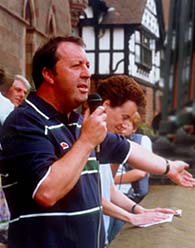 And
you
thought
we
lived
in
a
democracy.
Chester
Amphitheatre
Trust
co-founder Alan
Williams (right,
speaking
on the Town Hall steps at
the
public
demonstration
on
July
2nd
2000)
commented
on
this,
"The
council
is
acting
against
the
wishes
of
the
people
of
Chester
and
is
avoiding
any
form
of
consultation...
We
have
now
probably
got
enough
information
to
hang
them
on.
The
council
says
its
policy
is
not
to
grant
planning
permission
to
speculative
office
developments
and
yet
the
David
McLean
proposal
will
include
building
offices.
The
leaked
document
shows
that
they
got
hold
of
the
site
excluding
other
people
having
a
chance. This
is
either
institutionalised
corruption
or
people
making
mistakes. This
is
not
just
an
issue
for
Chester, it
should
be
of
concern
to
the
whole
country". And
you
thought
we
lived
in
a
democracy.
Chester
Amphitheatre
Trust
co-founder Alan
Williams (right,
speaking
on the Town Hall steps at
the
public
demonstration
on
July
2nd
2000)
commented
on
this,
"The
council
is
acting
against
the
wishes
of
the
people
of
Chester
and
is
avoiding
any
form
of
consultation...
We
have
now
probably
got
enough
information
to
hang
them
on.
The
council
says
its
policy
is
not
to
grant
planning
permission
to
speculative
office
developments
and
yet
the
David
McLean
proposal
will
include
building
offices.
The
leaked
document
shows
that
they
got
hold
of
the
site
excluding
other
people
having
a
chance. This
is
either
institutionalised
corruption
or
people
making
mistakes. This
is
not
just
an
issue
for
Chester, it
should
be
of
concern
to
the
whole
country".
These
comments
were
later
to
get
poor
Mr
Williams
into
hot
water,
as
we
shall
soon
see. He
stressed
that
this
not
a
matter
of
individuals
attempting
to
gain
from
development
deals,
but
something
'bred
into
the
fabric'
of
local
authorities
due
to
the
inadequacies
of
government
funding;
cash-strapped
councils
were
more
likely
to
accept
and
approve
plans
when
private
interests
offered
to
foot
the
bill.
This
is
known
as planning
gain and
is,
of
course,
completely
legal,
but
should
nevertheless
be
seen
as
a
source
of
great
concern
where
it
results
in
crass
developments
which
take
little
account
of
planning
restrictions
wisely
designed
to
protect
the
unique
features
of
ancient
cities-
we
refer
you
again,
for
example,
to
the AAI
plan above-
and
in
this
case,
was
apparently
being
allowed
to
completely
ignore
them.
What
this
would
mean
for
any
future
development
in
the
city,
such
as
the
massive
scheme
currently
in
preparation
for
the Town
Hall area,
was
anybody's
guess...
A
council
spokesman
responded
"The
council
reiterates
its
long
term
aspirations
to
see
the
full
excavation
of
the
site"
(having
handed
over
a
large
chunk of
it
to
a
single
private
interest
for
the
next couple
of
centuries,
the
emphasis
would
certainly
appear
to
have
been
on
the
phrase
'long
term')
and
continued
"We
are
in
the
process
of
getting
the
views
and
opinions
of
a
wide
range
of
people".
Commenting
upon
the
widespread
leaking
of
the
200
year
lease
shocker,
the
council
spokesman
laughably
concluded,"It
is
unfortunate
that
confidential
documents
should
be
leaked
in
such
a
way
that
they
could
mislead
the
residents
of
Chester".
As
opposed
to
being kept
secret in
order
to
mislead
the
residents
of
Chester,
we
assumed...
Mr
Williams'
accusation
that
the
council
was
putting
the
lure
of
developer's
money
before
the
long-term
interests
of
Chester
led,
on
15th
June
2000,
to
the
local
press
publishing
this
'open
letter'
to
him
from Paul
Durham,
Chief
Executive
of
Chester
City
Council:
"One
of
the
problems
staff
here
have
faced
from
the
start
in
trying
to
find
a
positive
way
forward
with
the
Amphitheatre
Trust
has
been
your
personal
style
in
dealing
with
other
people. This
is
most
evident
in
recent
press
coverage
in
the Standard and Chronicle newspapers
where
your
avowed
wish
to
work
and
co-operate
with
us
has
been
totally
compromised
by
your
apparent
mission
to
publicly
denigrate
both
the
city
council
and
its
hard
working
people
and,
in
your
own
words,
to
'hang
us'.
I
refute
entirely
your
accusations
of
corruption
here.
Would
you
please
contact
the
newspapers
you
have
spoken
to
and
withdraw
the
accusations
of
corruption
you
have
made
against
the
city
council.
Please
also
confirm
to
them
that
you
were
wrong
ever
to
have
made
such
baseless
allegations.
When
you
have
done
so
then
my
colleagues
and
I
will
be
able
to
have
further
contact
with
you
and
to
attend
meetings
that
you
are
involved
in.
Until
you
withdraw
your
very
serious
accusations
against
us
officers
of
the
city
council
cannot
work
with
you.
We
will
however
continue
to
work
with
the
trust
through
any
other
representative
the
trust
chooses
to
nominate".
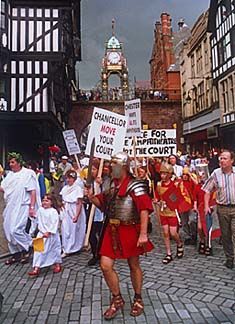 Considering
their
record
to
date,
it
seemed
rich
indeed
for
Chester
City
Council
to
have
attempted
to
take
the
moral
high
ground
in
this
manner-
and
doubtless
most
convenient
for
them
to
refuse
to
deal
with
one
of
the
founders
of
a
campaigning
organisation
which
clearly had
the
backing
of
of
the
great
majority
of
Chester's
people-
and,
as
our
rapidly-growing letters pages
show,
of
people
throughout
the
world-
with,
of
course,
the odd
exceptions... Considering
their
record
to
date,
it
seemed
rich
indeed
for
Chester
City
Council
to
have
attempted
to
take
the
moral
high
ground
in
this
manner-
and
doubtless
most
convenient
for
them
to
refuse
to
deal
with
one
of
the
founders
of
a
campaigning
organisation
which
clearly had
the
backing
of
of
the
great
majority
of
Chester's
people-
and,
as
our
rapidly-growing letters pages
show,
of
people
throughout
the
world-
with,
of
course,
the odd
exceptions...
Contradiction
upon
contradiction.
Speaking
about
the
amphitheatre
scandal
on
BBC
Radio
4's
consumer
affairs
programme, You
and
Yours on
Monday,
12th
June
2000,
Chester
City
Council
spin
doctor Michael
McCabe admitted
"We
were
wrong.
We
made
a
mistake
over
the
amphitheatre.
All
the
councillors
would
be
honest
and
say
if
we
were
here
today
(???) we
would
do
it
differently
and
if
that's
an
admission
of
a
mistake
then
I
think
a
lot
of
people
would
make
that
admission".
Around
this
time,
the
Amphitheatre
Trust
operated
a
stall
at
the
Cross
in
Chester
city
centre
over
the
course
of
a
few
Saturdays
where
passers-by
were
invited
to
sign
a
petition
calling
upon
the
Lord
Chancellor
to
find
an
alternative
site
for
his
courthouse
and
to
allow
full
excavation
of
the
amphitheatre.
They
reported
that,
despite
the
unclement
weather,
people
were
"rushing
to
sign
up"
and
thousands
of
signatures
were
obtained,
which
were
duly
forwarded
for
the
attention
of
the
city
council
and
Lord
Chancellor.
On
Sunday,
July
2nd
2000,
there
took
place
a
public
march
and
demonstration
against
the
courthouse
development. The
rain
held
off
and
hundreds
of
people
marched
from
the
amphitheatre
to
the
Town
Hall
where
they
gathered
to
make
their
wishes
known
loundly
and
clearly.
Our
photograph
shows
Emperors
and
Legionnaires
marching
at
the
head
of
the
long
procession
as
it
passed
beneath
Chester's
famous Eastgate
Clock.
More
pictures
of
the
day
may
be
seen
on
the next
page...
The
Six
Point
Plan:
Here
are
the
Chester
Amphitheare
Trust's
proposals-
presented
to
the
city
council's
Leadership
Board
on
6th
June
2000-
designed
to
allow
the
council
to
retain
the
entire
amphitheatre
without
incurring
large
costs:
•
Chester
City
Council
and
David
McLean
put
forward
a
'land
swap'
proposal
involving
one
of
the
council-owned
car
parks
and
the
amphitheatre
site.
•
The
Lord
Chancellor
and
David
McLean
agree
to
put
the
courthouse
construction
on
hold.
•
David
McLean
provides
details
of
the
cost
of
work
carried
out
to
date;
the
cost
of
clearing
the
amphitheatre
site
and
cost
or
saving
from
moving
to
an
alternative
site.
•
Chester
City
Council
makes
a
formal
offer
to
David
McLean
for
an
alternative
site
that
allows
all
the
costs
to
be
reimbursed.
•
The
Lord
Chancellor
and
David
McLean
agree
revised
details
for
the
alternative
site
and
court
building
at
the
same
price
to
the
Lord
Chancellor
as
the
current
lease.
•
All
parties
sign
formal
agreements.
Go on
to Part
V of our story of the Chester Amphitheatre. Here is a growing
collection
of letters to
us
and
the
local
press.
Or visit the ancient Church of St. John the Baptist instead...
Top
of
Page | Site
Front
Door | Site
Index | Chester
Stroll
Introduction | Amphitheatre
I | 01 | II | III | V | VI | VII | VIII | IX | | X | XI | XII | XIII | Gallery | 2 |
St. John's House | Chester Amphitheatre Project |Letters
page
1 | 2 | 3 | 4 | 5 | 6 | 7 | Some
alternative
views
'Round
in
Circles'
by Flavius | Save
the
Chester
Amphitheatre! (1932) | On
to
St. John's
Church |




 You
may
also
be
interested
to
know
that
the
archaeologically-important
area
known
as
Fletcher's
Lane / Buildings,
between
Eastgate
Street
and
St. Michael's
Row,
which
our
councillors
have
recently
allowed
to
be
needlessly
destroyed
so
that Brown's /Debenham's can
extend
their
sales
area-
was
also
coloured
red
on
this
map. One
opponent
of
this
was
Councillor Steve
Davis,
who told
his
colleagues
at
the
time, "Your
arguments
for
Debenham's
development
destroy
all
arguments
for
protecting
the
amphitheatre.
Anyone
who
votes
in
favour
of
this
application
obviously
doesn't
give
a
damn
for
the
heritage
of
Chester".
You
may
also
be
interested
to
know
that
the
archaeologically-important
area
known
as
Fletcher's
Lane / Buildings,
between
Eastgate
Street
and
St. Michael's
Row,
which
our
councillors
have
recently
allowed
to
be
needlessly
destroyed
so
that Brown's /Debenham's can
extend
their
sales
area-
was
also
coloured
red
on
this
map. One
opponent
of
this
was
Councillor Steve
Davis,
who told
his
colleagues
at
the
time, "Your
arguments
for
Debenham's
development
destroy
all
arguments
for
protecting
the
amphitheatre.
Anyone
who
votes
in
favour
of
this
application
obviously
doesn't
give
a
damn
for
the
heritage
of
Chester". And
you
thought
we
lived
in
a
democracy.
Chester
Amphitheatre
Trust
co-founder Alan
Williams (right,
speaking
on the Town Hall steps at
the
public
demonstration
on
July
2nd
2000)
commented
on
this,
"The
council
is
acting
against
the
wishes
of
the
people
of
Chester
and
is
avoiding
any
form
of
consultation...
We
have
now
probably
got
enough
information
to
hang
them
on.
The
council
says
its
policy
is
not
to
grant
planning
permission
to
speculative
office
developments
and
yet
the
David
McLean
proposal
will
include
building
offices.
The
leaked
document
shows
that
they
got
hold
of
the
site
excluding
other
people
having
a
chance. This
is
either
institutionalised
corruption
or
people
making
mistakes. This
is
not
just
an
issue
for
Chester, it
should
be
of
concern
to
the
whole
country".
And
you
thought
we
lived
in
a
democracy.
Chester
Amphitheatre
Trust
co-founder Alan
Williams (right,
speaking
on the Town Hall steps at
the
public
demonstration
on
July
2nd
2000)
commented
on
this,
"The
council
is
acting
against
the
wishes
of
the
people
of
Chester
and
is
avoiding
any
form
of
consultation...
We
have
now
probably
got
enough
information
to
hang
them
on.
The
council
says
its
policy
is
not
to
grant
planning
permission
to
speculative
office
developments
and
yet
the
David
McLean
proposal
will
include
building
offices.
The
leaked
document
shows
that
they
got
hold
of
the
site
excluding
other
people
having
a
chance. This
is
either
institutionalised
corruption
or
people
making
mistakes. This
is
not
just
an
issue
for
Chester, it
should
be
of
concern
to
the
whole
country".